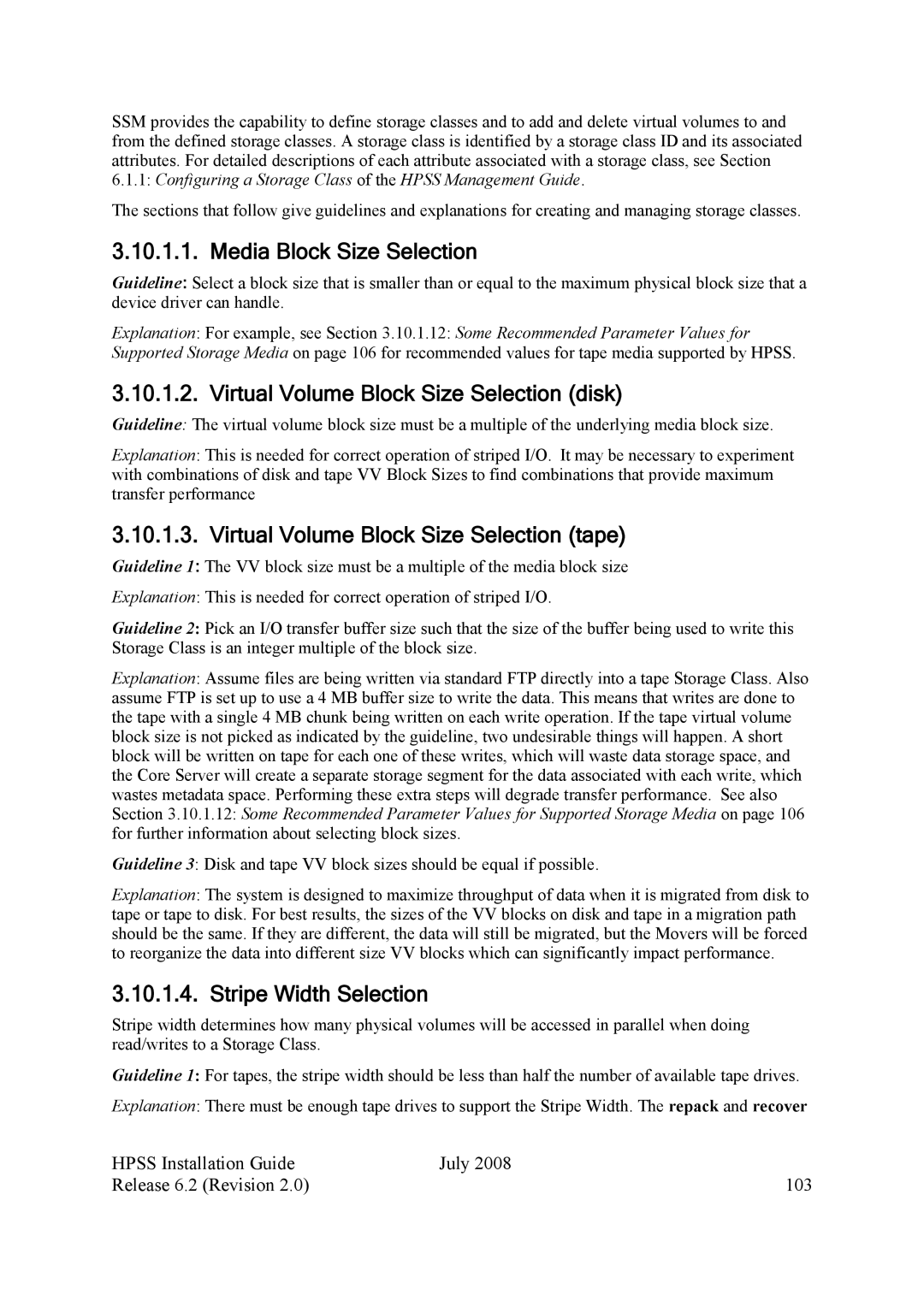SSM provides the capability to define storage classes and to add and delete virtual volumes to and from the defined storage classes. A storage class is identified by a storage class ID and its associated attributes. For detailed descriptions of each attribute associated with a storage class, see Section 6.1.1: Configuring a Storage Class of the HPSS Management Guide.
The sections that follow give guidelines and explanations for creating and managing storage classes.
3.10.1.1. Media Block Size Selection
Guideline: Select a block size that is smaller than or equal to the maximum physical block size that a device driver can handle.
Explanation: For example, see Section 3.10.1.12: Some Recommended Parameter Values for Supported Storage Media on page 106 for recommended values for tape media supported by HPSS.
3.10.1.2. Virtual Volume Block Size Selection (disk)
Guideline: The virtual volume block size must be a multiple of the underlying media block size.
Explanation: This is needed for correct operation of striped I/O. It may be necessary to experiment with combinations of disk and tape VV Block Sizes to find combinations that provide maximum transfer performance
3.10.1.3. Virtual Volume Block Size Selection (tape)
Guideline 1: The VV block size must be a multiple of the media block size
Explanation: This is needed for correct operation of striped I/O.
Guideline 2: Pick an I/O transfer buffer size such that the size of the buffer being used to write this Storage Class is an integer multiple of the block size.
Explanation: Assume files are being written via standard FTP directly into a tape Storage Class. Also assume FTP is set up to use a 4 MB buffer size to write the data. This means that writes are done to the tape with a single 4 MB chunk being written on each write operation. If the tape virtual volume block size is not picked as indicated by the guideline, two undesirable things will happen. A short block will be written on tape for each one of these writes, which will waste data storage space, and the Core Server will create a separate storage segment for the data associated with each write, which wastes metadata space. Performing these extra steps will degrade transfer performance. See also Section 3.10.1.12: Some Recommended Parameter Values for Supported Storage Media on page 106 for further information about selecting block sizes.
Guideline 3: Disk and tape VV block sizes should be equal if possible.
Explanation: The system is designed to maximize throughput of data when it is migrated from disk to tape or tape to disk. For best results, the sizes of the VV blocks on disk and tape in a migration path should be the same. If they are different, the data will still be migrated, but the Movers will be forced to reorganize the data into different size VV blocks which can significantly impact performance.
3.10.1.4. Stripe Width Selection
Stripe width determines how many physical volumes will be accessed in parallel when doing read/writes to a Storage Class.
Guideline 1: For tapes, the stripe width should be less than half the number of available tape drives.
Explanation: There must be enough tape drives to support the Stripe Width. The repack and recover
HPSS Installation Guide | July 2008 |
Release 6.2 (Revision 2.0) | 103 |
